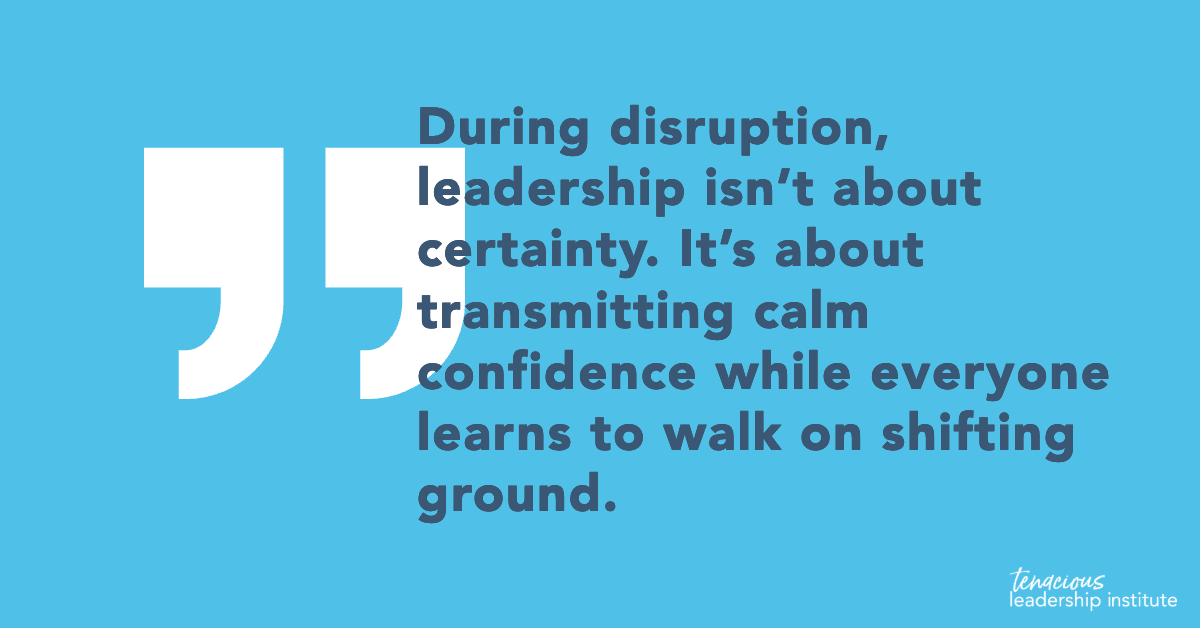5 Things Your Team Needs to Hear From You During Disruption
When the world around your organization feels uncertain, your team looks to you not just for answers — but for signals of stability. Neuroscience tells us that uncertainty activates the amygdala, the brain’s threat detection center. When this happens collectively, even high-performing teams can slip into defensiveness, over-analysis, or disengagement.
Leadership communication during disruption is not a “soft skill” — it’s a strategic differentiator. The language you use and the energy you bring either regulate or dysregulate your team’s collective nervous system. In organizations where executives communicate with composure, transparency, and empathy, people stay creative under pressure. In those where communication is inconsistent or overly analytical, fear takes root. The result is slower decision-making, missed opportunities, and the erosion of trust.
The cost of not communicating clearly in uncertain times is measurable. Teams that lack consistent leadership messaging experience up to 40% lower engagement and 23% higher turnover (according to Gallup). Innovation stalls because people retreat into self-protection rather than contribution. When leaders default to silence or purely tactical updates, the organization’s emotional center — its sense of shared purpose and safety — starts to fracture.
Your role as an executive is not just to set direction, but to stabilize the system — to give people language that turns uncertainty into action. These five statements do more than inform; they recalibrate attention, energy, and trust. They remind your team that even when the path ahead shifts, their leader is steady and intentional in guiding them forward.
Here are five statements that reset the nervous system of your team and strengthen trust during disruption:
1. “Here’s what’s changing — and what’s not.”
Ambiguity breeds anxiety. Your team needs clarity on both fronts. Define the constants: your purpose, values, and shared priorities. It helps the brain anchor to something solid.
2. “We’ll navigate this together.”
This phrase turns isolation into inclusion. During disruption, belonging becomes a stabilizer — reminding people they’re part of a capable collective.
3. “I don’t have all the answers, but I’ll keep communicating.”
Transparency builds psychological safety. Research from Harvard’s Amy Edmondson shows that when leaders model openness and vulnerability, teams take smarter risks and innovate faster.
4. “Here’s how you can focus your energy right now.”
Help your team avoid decision fatigue by clarifying priorities. Cognitive load theory shows that focusing attention on 2–3 meaningful actions prevents overwhelm and keeps motivation high.
5. “I appreciate your adaptability.”
Recognition releases dopamine, which counterbalances the stress hormones triggered by change. Genuine acknowledgment shifts a team’s physiology back toward trust and creativity.
Your team doesn’t expect you to predict the future. They expect you to hold the space between uncertainty and possibility with calm authority. These five phrases don’t just communicate information — they transmit steadiness.
Apply This to Your Organization
If your executive team is navigating disruption, consider completing the TLI Disruption Leadership Audit™ — a structured diagnostic designed to assess your team’s clarity, communication, and collective adaptability.
In under two weeks, you’ll receive:
A leadership team assessment measuring communication, trust, and strategic focus under pressure
A Disruption Readiness Scorecard highlighting your team’s strengths and blind spots
A 90-day leadership roadmap with neuroscience-informed actions to increase alignment and agility
Schedule your Disruption Leadership Audit™ and strengthen the way your leadership team communicates through uncertainty.
Leadership Practice
Stability Signals
This week, try this short practice:
Pause before your next team meeting - Take three slow breaths. Ask yourself, “What signal does my presence send right now — anxiety or steadiness?”
Name the moment - Acknowledge the challenge your team is in. Say, “This is a complex period — and it’s okay to feel uncertain.”
Anchor the constants - Reiterate what hasn’t changed: your shared values, goals, and confidence in the team’s capability.
Close with appreciation - Recognize one behavior you’ve noticed that demonstrates adaptability or collaboration.
This simple sequence rewires group attention from fear to focus — one of the most tenacious acts of leadership.
Author
Athena Williams, Founder and CEO of Tenacious Leadership Institute, has been supporting leaders worldwide to become more tenacious for over 20 years. She has found that tenacity is the key to sustained leadership success in today’s ever-changing world. Through her coaching and leadership development programs, she helps leaders expertly handle change, complexity and other challenges so they can quickly get better results for themselves, their teams and their organizations.
Take the first step to becoming a tenacious leader by scheduling a call with us.



